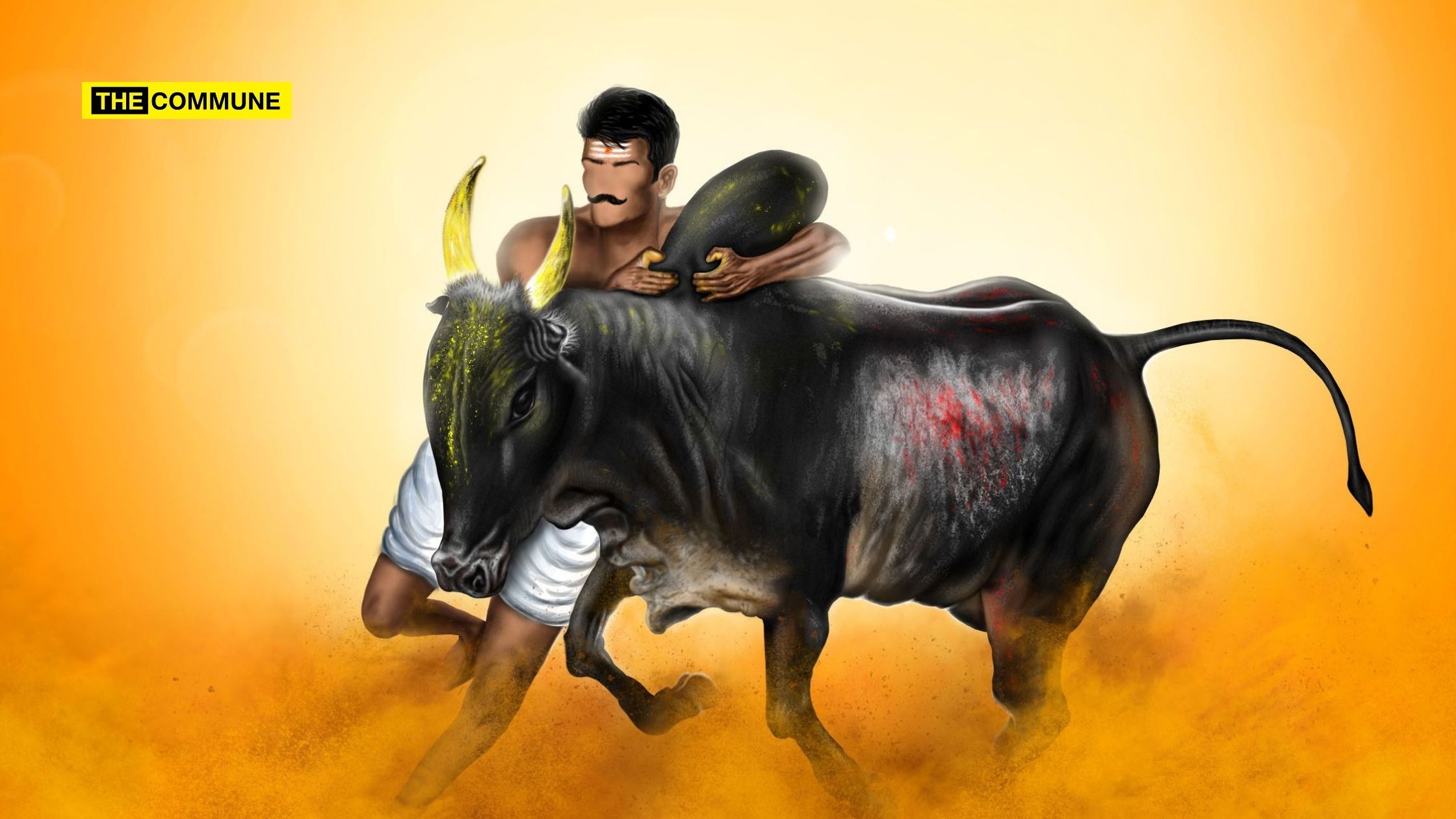
Jallikkattu, a traditional ritual performed during the Pongal season in some parts of Tamil Nadu, is a very ancient festival. Known also as “Eru Thazhuvuthal”, the ritual was mentioned in the Sangam texts like Kalithogai and Mullai Paatu. The core of the tradition involves letting a bull run from a gate known as ‘Vadi Vaasal’ and multiple participants tries to catch the hump of the bull for as much time as possible. The winner is someone who tames the bull or someone who runs along with that catching the hump for a distance / time. There are variations to this depending on the place where it is celebrated.
As per the Sangam texts, the Jallikkattu was performed near a temple and is always associated with Sanatana tradition. In fact, the first bull which is let out of Vadi Vaasal is always the temple bull – Kovil Kaalai and no one will touch it. ‘Mullai Kali’ part of Kalithogai describes the procedures involved in the Eru Thazhuvuthal in detail. Before the start, the villagers will pray to the God.
Aar kali uvagaiyar orungu uṭaṉ koodi,
Theethu Indru Polika Ena deiva Kadi Ayarmar
The villagers will assemble and pray to the God says Kali – 104th verse in the beginning. Then the bulls will come to the ‘ring’.
Kalithogai verses 104 and 105 compares the colour of the bulls and the marks on their body with the Sanatana Gods. For example, a white bull is described as
Panaikkodi Paal Nira Vannan Pola Pazhi Theerntha Vellaiyum
The white bull is as white as the God Balarama who had Palm as his flag.
Thiru Maru Marban Pola Thiral Sandra Kaariyum
The Kaari bull which is black coloured like Vishnu who had Lakshmi in his chest.
Mukkannaan Uruve Pola Muran Migu Kuraalum
Herę the bright Kuraal bull is compared to Siva who has three eyes and radiating light.
Then the red coloured bull comes in this verse
Vel Vallaan Nirane Pol Very Vantha Seyum
This one has the red colour of Muruga who is also red coloured and has the spear in his hand.
The above direct comparisons can be seen in verse 104.
Verse 105 gives some indirect references to the same Gods and compare them with some of the features of the bull. For example,
“Val Urul Nemiyan Vaai Vaitha Valai Pola Thellithin Vilangum Suri Netri Kaariyum”, a black bull comes to the Jallikkattu ground. It has a mark of Conch on its face. So the poet says the colour is like Vishnu’s black colour and the mark on the face is like His Panchajanya.
“Oru Kuzhayavan Maarbil On Thaar Pol Oli Migapporu Arap Porunthiya Sem Maru Vellayum”, this line compares the while bull to Balarama as before. But adds that the red mark on its chest is like Balarama wearing a red garland. It must be noted that the verse describes Balarama as someone who has one earring, a fact mentioned in our Puranas.
Then “Kanichiyon Mani Midattru Ani Pola Irumbinar Eruththin Enthu Imil Kuraalum” . This means that the Kuraal which is quite bright has a blue neck, just like Siva whose neck became blue after drinking the Halahala Poison
“Vel Valaan Udaiththaazhntha Vilangu Ven Thukil Eyppavaalithu Kilarntha Ven Kaal Serum” says another line. This means while the red coloured bull is like Muruga, the legs are while and it is like Murugan wearing a white cloth.
Kali 104 also says that once these bulls are let go, the fight between the participants and the bulls are like fight between Pandavas and Kauravas in the Kurukshetra.
One can clearly see the imprint of Sanatana in all such comparisons in one of the very ancient traditions of Tamilagam, the Jallikkattu.
TS Krishnan is a Tamil scholar and author.
Subscribe to our channels on Telegram, WhatsApp, and Instagram and get the best stories of the day delivered to you personally.




